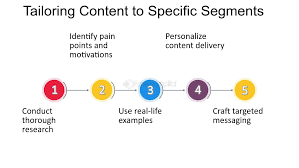In the world of SEO, content is king, but even the most well-crafted content has a lifecycle. As time goes on, your content’s effectiveness in driving traffic, engaging users, and ranking in search engines can fluctuate. That’s where understanding content maturity comes into play.
Content maturity refers to the various stages your content goes through from the moment it’s published to when it becomes “evergreen” or requires a refresh. Knowing how to measure this lifecycle and when to update or repurpose content can significantly boost your SEO efforts.
The Lifecycle of Content in SEO
Content maturity is about assessing where your content stands in its lifecycle and making strategic decisions to keep it relevant. Here are the key stages of content lifecycle:
- New Content: When your content is first published, it’s considered “fresh.” At this stage, search engines prioritize it in results, especially if it’s optimized well with the right keywords. However, it may take time to gain traction and generate backlinks. If you’re optimizing for SEO, ensure you follow best practices from the start, such as using SEO services to optimize on-page elements and keywords.
- Growth Phase: After your content has been live for a few weeks or months, it starts gaining more attention. If you’ve shared it on social media, generated backlinks, or optimized for long-tail keywords, you’ll see increased organic traffic and engagement. At this stage, your content should be well-maintained to stay relevant. Updating facts, adding new insights, or enhancing user experience (UX) can help during this phase.
- Evergreen Content: Some content stands the test of time and continues to attract traffic long after it’s published. This is known as evergreen content. It’s well-researched, informative, and answers questions that remain relevant over time. Examples include how-to guides, tutorials, or in-depth articles about industry fundamentals. Content Writing Services are great for producing high-quality, evergreen content that keeps driving traffic.
- Content Decline: Over time, even the best content can start to lose its effectiveness. Search engine algorithms evolve, new competitors publish better content, and user interest may shift. As this happens, your content will need updates to stay relevant and maintain its rankings.

Measuring Content Maturity
Measuring the maturity of your content is critical for understanding when to refresh or update it. Here are some factors you should analyze:
- Traffic Trends: Use tools like Google Analytics to track the traffic your content generates over time. If you notice a steady decline, it might be time to update or refresh it.
- Rankings: Monitor your keyword rankings. If your content starts slipping down in search engine results pages (SERPs), it’s a clear sign that your competitors are outdoing you.
- User Engagement: Look at metrics like time on page, bounce rates, and click-through rates (CTR). A drop in these metrics could mean your content is no longer resonating with your audience.
When to Refresh or Update Content
Refreshing or updating your content is key to maintaining its relevance and keeping it high in search rankings. Here’s how to approach this:
1. Update for SEO
Search engines like Google prioritize fresh and up-to-date content. Make sure to review your content periodically to optimize it for the latest SEO trends, such as incorporating new keywords, improving internal linking, and updating meta tags.
2. Revise Outdated Information
If your content includes statistics, case studies, or industry standards, it’s important to update these as they change. For example, if you have a blog about Google My Business, ensure that all the steps and features mentioned are still accurate.
3. Enhance User Experience
Sometimes content becomes stale not because of the information but due to outdated user experience. Ensure your content is still easily readable, visually appealing, and optimized for mobile devices. A good user experience also contributes to higher SEO rankings, and services like our Web Development can help enhance your site’s performance.
4. Add New Content
You don’t always have to create new content from scratch. Repurposing existing content by adding new sections, updating old data, or even turning blog posts into videos or infographics can give it a new lease of life.
Creating Evergreen Content for Long-Term Success
The best way to avoid frequent updates is to create content that has the potential to stay relevant over time. Here are some tips for building evergreen content:
- Focus on timeless topics: Choose topics that will remain relevant in your industry, regardless of changes in trends. For instance, topics like Pay-Per-Click advertising and SEO fundamentals tend to have lasting value.
- Target long-tail keywords: Long-tail keywords are more specific and often less competitive, making it easier to rank and attract targeted traffic over time.
- Keep content comprehensive: In-depth content tends to perform better and lasts longer in search rankings. By covering a topic thoroughly, you reduce the need for frequent updates.
Conclusion: Content Maturity Matters
Your content’s lifecycle doesn’t end once it’s published. By understanding where your content stands in its maturity, you can make informed decisions about when to update, refresh, or repurpose it for maximum SEO impact. Regularly revisiting your content and keeping it aligned with your audience’s needs will ensure it continues to drive traffic and conversions.
If you’re looking to optimize your content for SEO, or need help refreshing outdated content, contact us today! Our team at Social Media Max is ready to help you create a content strategy that supports your business goals. Call us at 0161 399 3517 or email Syed_66@hotmail.com to get started!
